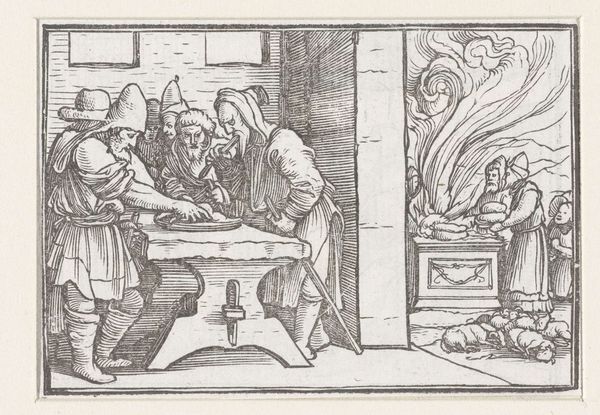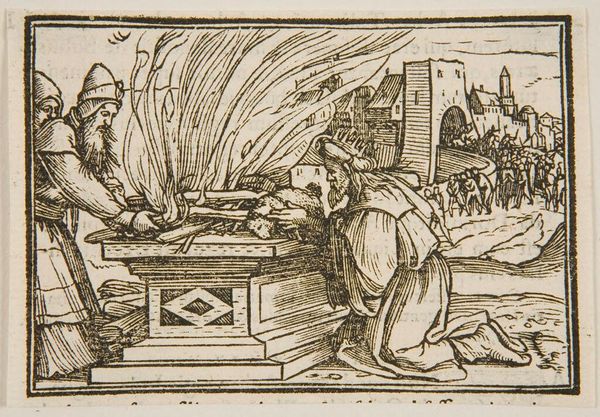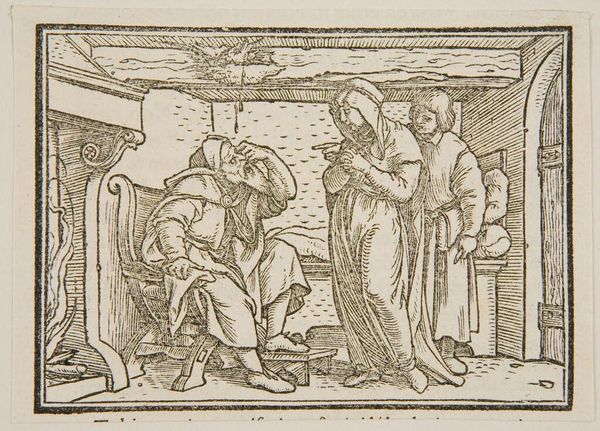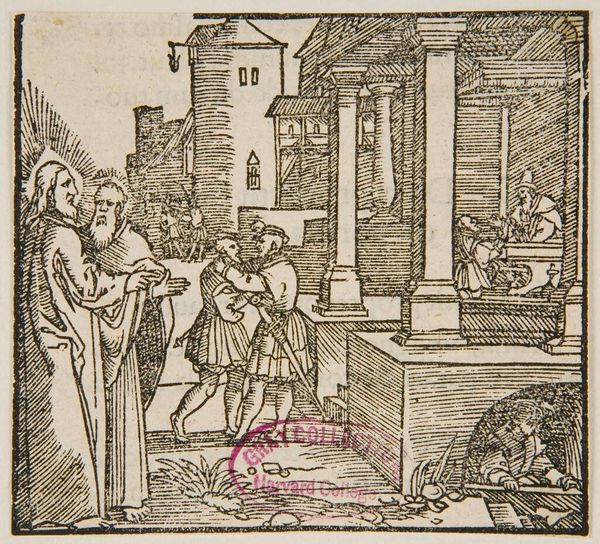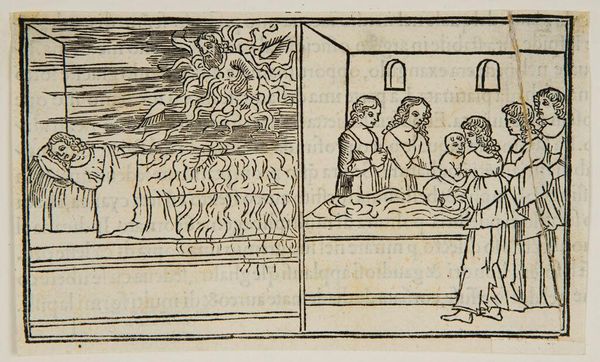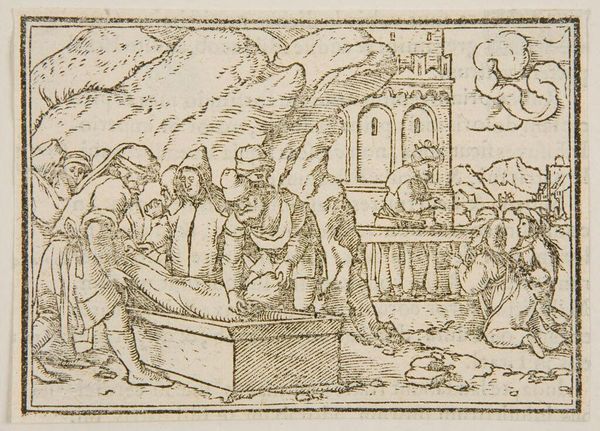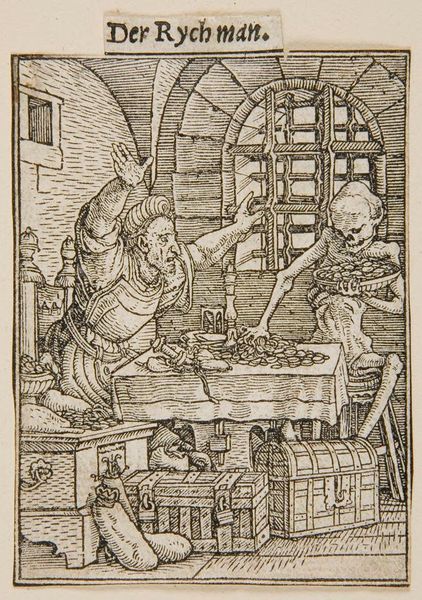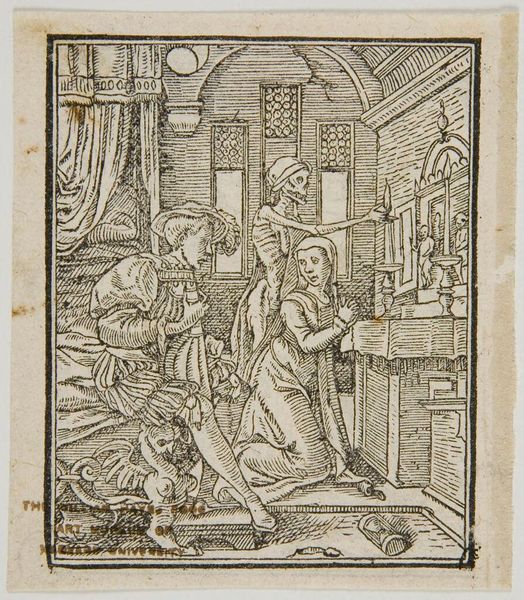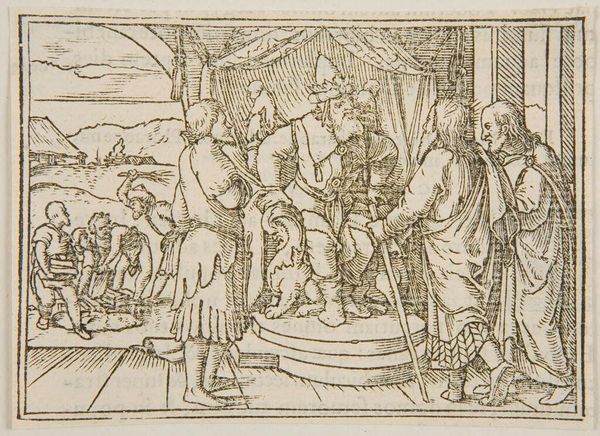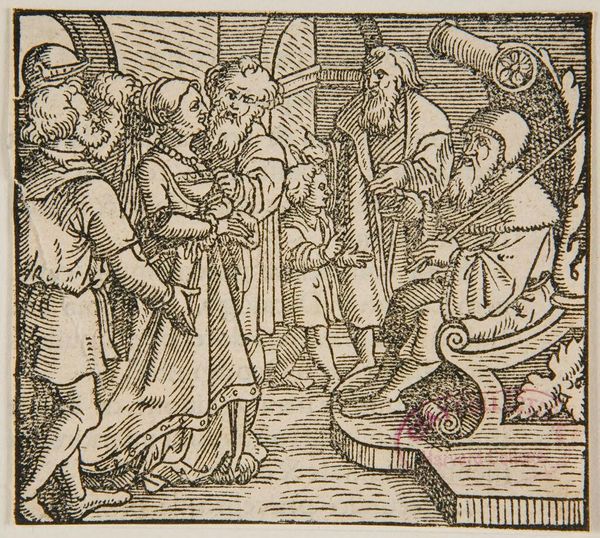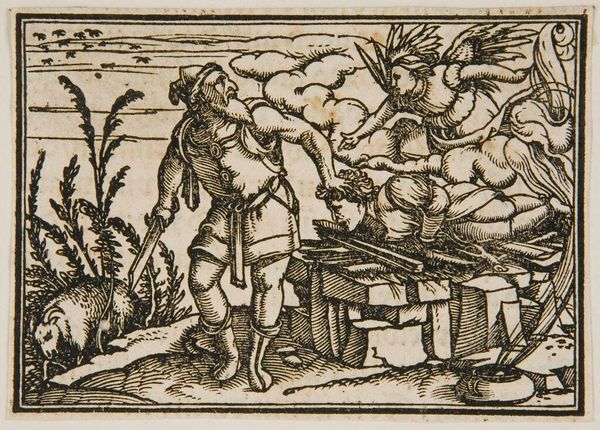
Copyright: CC0 1.0
Editor: This is "2 Chom. XXXV" by Hans Holbein the Younger. It’s a very detailed, small-scale print with what looks like a religious scene depicted. What can you tell me about it? Curator: Holbein’s woodcuts are fascinating because of the labor and skill involved in their production. Consider the social context: prints like this made religious narratives accessible and reproducible, impacting both belief and craft. What do you make of the composition's division? Editor: Well, there seem to be two distinct scenes, almost like before and after. I wonder about the artist's choice to include both. Curator: Exactly! Think about the materials used: the wood block itself, the ink, the paper. Each played a part in disseminating ideas and generating a market for such imagery. How does that influence your understanding of the work? Editor: That's a good point. I was just seeing the religious aspect, but there is the labor intensive aspect to it. Curator: Precisely. It pushes us to think beyond the immediate image and reflect on the economic and social forces at play in its creation and consumption. Editor: I will consider how prints were used as commodities. Curator: Indeed. Holbein's work encapsulates the intersection of art, craft, and the emerging market for reproducible images.
Comments
No comments
Be the first to comment and join the conversation on the ultimate creative platform.
